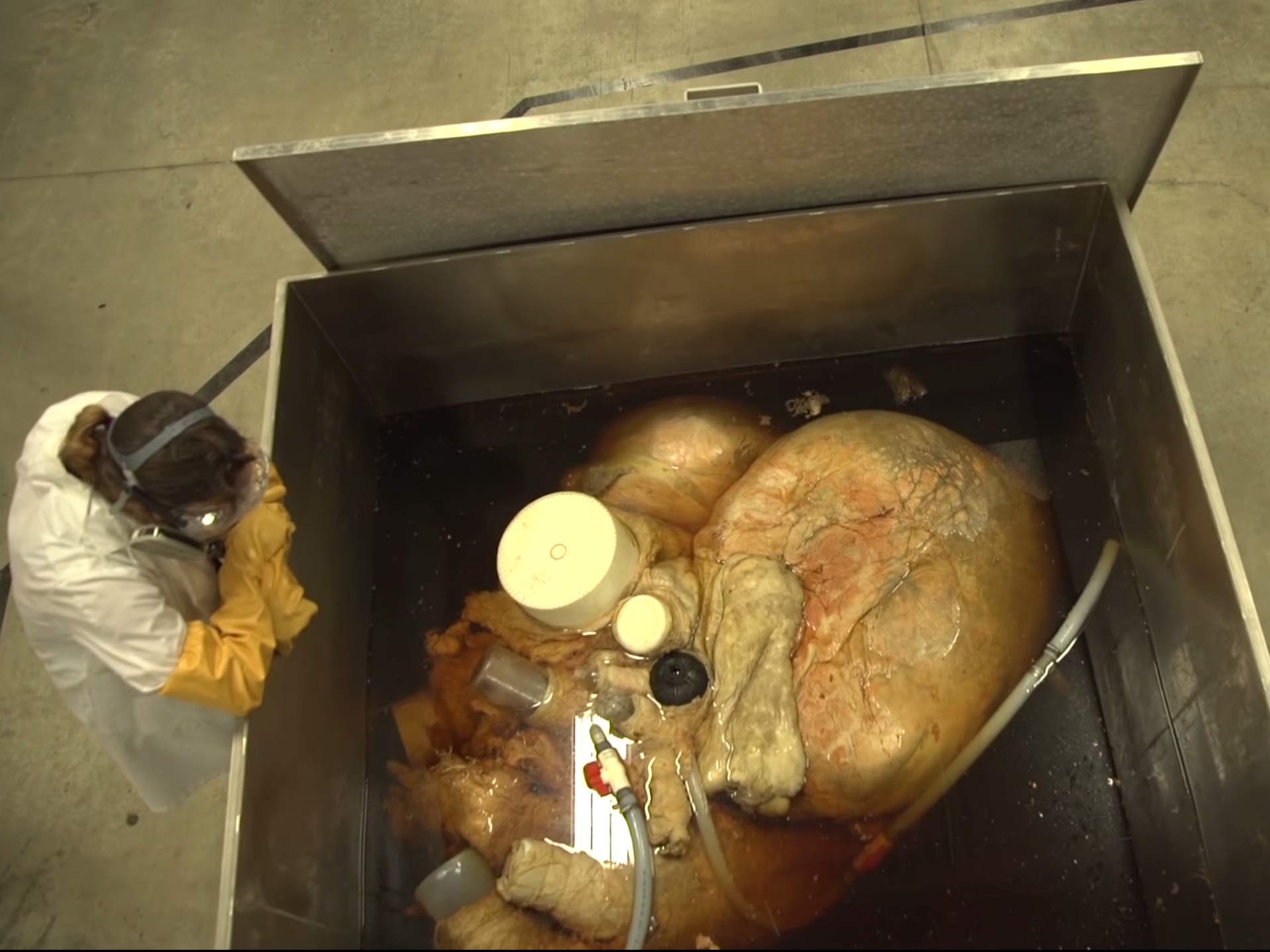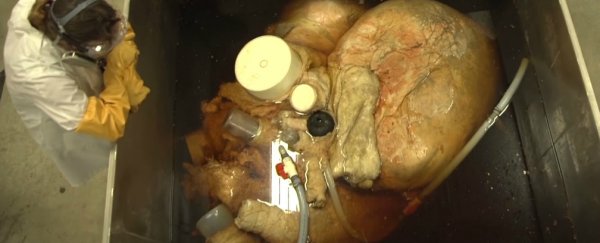For over a year, the giant, 400-pound (181-kilogram) heart of a blue whale sat tucked away - frozen - in a warehouse two hours east of Toronto, Canada.
Just last month, scientists at the Royal Ontario Museum (ROM) removed the heart from its icy chamber so they could begin preserving it long-term. Luckily for us, they documented the whole thing.
Feast your eyes on what is likely the largest heart that humans have ever preserved:

"To our knowledge this is the first blue whale heart to be anatomically preserved for exhibit and study," Jacqueline Miller, who is a mammalogy technician from the ROM, said in a PBS video. The video is a short clip from the new three-night television series Big Blue Live, scheduled to air on PBS August 31.
The heart weighs 400 pounds (181 kilograms), is about 5 feet (1.5 metres) long, and - when in action - pumped about 60 gallons (227 litres) of blood through the blue whale's veins every single heart beat. It took a total of four people to push the heart through a hole they had carved into the chest cavity, Miller said.
Blue whales are thought to be the largest animal that ever lived. The heaviest on record weighed 190 metric tonnes (418,000 pounds) and was 98 feet (30 metres) long. Here's how an average human sizes up:

Moreover, blue whales are an endangered species. No more than 12,000 of them are thought to inhabit Earth. When they die, their bodies often sink to the seafloor, providing a bona-fide feast for the animals below.
As a result, biologists rarely get a chance to study the internal anatomy of these giant mammals. When the carcass of a blue whale washed ashore in Newfoundland, Canada in May of last year, Miller and other experts saw a golden opportunity. Here they are cutting open the body:
The giant organ took five days to thaw after scientists unplugged the freezer it was being preserved in.
Miller and her colleagues then plugged up the numerous arteries and began pumped a total of about 1,000 gallons (3,785 litres) of formaldehyde throughout the heart. Formaldehyde has a nauseating scent, but it stops decomposition dead in its tracks.
Miller, for obvious reasons, is wearing a mask as she wades through the swimming pool of formaldehyde to show us the heart's aorta:

After a week in its formaldehyde bath, the heart will be removed, dehydrated with acetone, and, lastly, slowly filled with silicone. After the silicone has hardened, the heart will be fully preserved and eventually ready for display at the ROM. Joining the heart will be the the same whale's skeleton.
Check out the clip with Miller and the blue whale heart below:

This article was originally published by Business Insider.
More from Business Insider:
